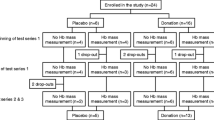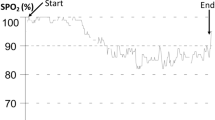Abstract
The effects of exercise on the rheological properties of blood have not received much research attention. Recent, limited evidence indicates that the viscosities of whole blood and plasma increase in response to a variety of exercise protocols. The increase in whole blood viscosity is mainly attributed to an increase in haematocrit and plasma viscosity, whereas the deformability and aggregability of red blood cells remain unaltered. The increases in plasma viscosity and haematocrit have been ascribed to exercise-induced haemoconcentration as a result of fluid transfer from the blood to the interstitial spaces.
Although the long term effects of endurance training on blood rheology have been very briefly examined, the exact effect of training has not as yet been determined. However, available cross-sectional and longitudinal studies indicate that the blood of endurance athletes is more dilute and this has been attributed to an expansion of plasma volume as a result of training. It has been suggested that this blood dilutional effect of endurance training may be advantageous in delivering oxygen to the exercising muscles because of a reduced resistance to blood flow. The increase in plasma volume may also contribute to the body water pool and help offset dehydration. The influence of strength and power training on blood rheology is not known.
Similar content being viewed by others
References
Letcher RL, Chien S, Pickering, T, et al. Direct relationship between blood pressure and blood viscosity in normal hypertensive subjects: role of fibrinogen. Am J Med 1981; 70: 1195–202
El-Sayed MS. Effects of exercise on blood coagulation, fibrinolysis and platelet aggregation. Sports Med 1996; 22: 282–98
Toth K, Mezey B, Juricskay I, et al. Hemorheological and hemodynamical parameters in cardiac patients [abstract]. Perfusion 1991; 4: 448
Toth K, Habon T, Horvath I, et al. Hemorheological and hemodynamical parameters in patients with ischemic heart disease at rest and at peak exercise. Clin Hemorheol 1994; 14: 329–38
Letcher RL, Pickering TG, Chien S, et al. Effects of exercise on plasma viscosity in athletes and sedentary normal subjects. Clin Cardiol 1981; 4: 172–9
Dormandy JA. What is viscosity? Viscositas 1979; 1: 1–5
Rand PW, Barker N, Lacombe. Effects of plasma viscosity and aggregation in whole blood viscosity. Am J Physiol 1970; 218: 115–23
Somer T. The viscosity of blood, plasma and serum in paraproteinemias. Acta Med Scand Suppl 1966; 456: 1–97
Chien S, Usami S, Taylor H, et al. The effects of haematocrit and plasma protein on human blood rheology at low shear rates. J Appl Physiol 1966; 21: 81–6
Chien S, Usami S, Dellenback RJ, et al. Shear dependent deformation of erythrocytes in rheology of human blood. Am J Physiol 1970; 219: 136–43
Lowe GDO, Barbenel JC. Clinical blood rheology. In: Lowe G, editor. Plasma and blood viscosity. Boca Raton (FL): CRC Press 1988; 1: 11–44
Kon K, Maeda N, Suda T, et al. Protective effect of alpha tocopherol on the morphological and rheological changes of rat red cells. Acta Haematol 1983; 69: 111–6
Gillam I. Antioxidant, exercise and tissue damage. Excel 1990; 6: 11–9
Fahraeus S. Influence of the rouleaux formation of the erythrocytes on the rheology of the blood. Acta Med Scand 1958; 161: 151–5
Charm SE, Kurland GS. Blood flow and microcirculation. New York: John Wiley, 1974
El-Sayed MS. Fibrinogen levels and exercise: is there a relationship? Sports Med 1996; 21: 402–8
Lowe GDO. Blood viscosity in vascular disease [thesis]. Dundee, Scotland: Univ. of Dundee, 1984
El-Sayed MS, Davies B. A physical conditioning program does not alter fibrinogen concentration in young healthy subjects. Med Sci Sports Exerc 1995; 27: 485–9
Barbee JH. The effect of temperature on the relative viscosity of human blood. Biorheology 1973; 10–7
Dintenfass L. Blood macrobiology-viscosity factors in blood flow, ischaemia and thrombosis. London: Butterworths, 1971
Neuhaus D, Gaehtgens P. Haemorrheology and long term exercise. Sports Med 1994; 18 (1): 10–21
Vandewalle H, Lacombe C, Lellevre JC, et al. Blood viscosity after 1-h submaximal exercise with and without drinking. Int J Sports Med 1988; 9: 104–7
Wood SC, Doyle MP, Appenzeller O. Effects of endurance training and long distance running on blood viscosity. Med Sci Sports Exerc 1991; 3: 1265–9
Lacombe C, Bucherer C, Lelievre CJ, et al. Effects hemorheologiques consecutifs a des exercises physiques controles sur ergocycle. J Malad Vasc 1991; 16: 279–82
Poortmans JR. Influence of physical exercise on protein in biological fluids. In: Poortmans, JR, editor. Biochemistry of exercise. Medicine and sport. Vol. 3. Basel/New York: Karger, 1969: 312–27
Fukuda T, Higaki S, Yamamoto K, et al. Red cell deformability and platelet function during exercise in patients with coronary artery disease. Biorheology 1981; 18: 282–3
Galea G, Davidson RJL. Hemorheology of marathon running. Int J Sports Med 1985; 6: 136–8
Martin DG, Ferguson EW, Wigutoff S, et al. Blood viscosity responses to maximal exercise in endurance-trained and sedentary female subjects. J Appl Physiol 1985; 59: 348–53
Ernest E, Daburger L, Saradeth T. The kinetics of blood rheology during and after prolonged standardized exercise. Clin Hemorheol 1991; 11: 429–39
Brun JF, Micallef P, Supparo I, et al. Effects of a standardised breakfast compared to fasting on the hemorheological responses to submaximal exercise. Clin Hemorheol 1995; 15: 213–20
Brun JF, Miccallef JP, Orsetti A. Hemorheologic effects of light prolonged exercise. Clin Hemorheol 1994; 14: 807–18
Reinhart WH, Staubli M, Wherher Straub P. Impaired red cell filterability with elimination of old cells during a 100-km race. J Appl Physiol 1983; 54: 827–30
Gueguen-Duchesne M, Durand F, Beillot J, et al. Effect of maximal physical exercise on hemorheological parameters in top level sportsmen. Clin Hemorheol 1989; 9: 625–32
Giombi A, Burnard ED. Rheology of human foetal blood with reference to haematocrit, plasma viscosity, osmolality and pH. Biorheology 1970; 6: 315–28
Brun JF, Fons C, Supparo I, et al. Could exercise-induced increase in blood viscosity at high shear rate be entirely explained by haematocrit and plasma viscosity changes? Clin Hemorheol 1993; 13: 187–99
Brun JF, Micallef JP, Supparo I, et al. Maximal oxygen uptake and lactate thresholds during exercise are related to blood viscosity and erythrocyte aggregation in professional football players. Clin Hemorheol 1995; 15: 201–12
Vicaut E, Hou X, Decuypere L, et al. Red blood cell aggregation and microcirculation in rat cremaster muscle. Int J Microcirc 1994; 14: 14–21
Bucherer C, Lacommbe C, Lellevre JC, et al. Effect of hydric intake on the rheological properties of blood after a submaximal exercise. Clin Hemorheol 1992; 12: 511–20
Dintenfass L, Lake B. Exercise fitness, cardiac work and blood viscosity factors in patients and normals. Eur Surg Res 1976; 8: 174–84
Dintenfass L, Lake B. Blood viscosity factors in evaluation of submaximal work output and cardiac activity in men. Angiology 1977; 28: 788–98
Brun JF, Sekkat M, Lagoueyte C, et al. Relationship between fitness and blood viscosity in untrained normal short children. Clin Hemorheol 1989; 9: 953–63
Ernest E, Matrai A, Aschenbrenner E, et al. Relationship between fitness and blood fluidity. Clin Hemorheol 1985; 5: 507–10
Ernest E, Matrai A, Aschenbrenner E. Blood rheology in athletes. J Sports Med 1985; 25: 207–10
Charm SE, Paz H, Kurland GS. Reduced plasma viscosity among joggers compared with non-joggers. Biorheology 1979; 16: 185–9
De Scalzi M, Cinelli P, de Leonardis V, et al. Response of some haemocoagulatory and haemorheological variables to maximal exercise in sedentary and active subjects. J Int Med Res 1987; 15: 361–7
Telford RD, Kovacic JC, Skinner SL, et al. Resting blood viscosity of elite rowers is related to performance. Eur J Appl Physiol 1994; 68: 470–6
Ernest E, Matrai A, Siepmann P, et al. Blood rheology in former and active athletes. J Sports Med 1987; 27: 373–5
Fendler K, Matrai A. Changes in blood viscosity in adolescent swimmers and adult weight-lifters. Hung Rev Sports Med 1980; 21: 199–203
Pretolani E, Zoli I, Battistini G, et al. Haemorheological changes during maximal stress test in athletes [abstract]. Clin Hemorheol 1985; 5: 654
Smith JA. Exercise training and red blood cell turnover. Sports Med 1995; 19 (1): 9–31
Ernest E, Schmid M, Matrai A. Inter-individual changes of hemorheological and other variables by regular exercise. J Sports Cardiol 1985; 2: 50–4
Martins E, Silva J. Blood rheological adaptation to physical exercise. Rev Port Hemoreol 1988; 2: 63–7
Lovlin RE, Sewchand LS, Beck JS, et al. Effects of exercise and conditioning on properties of red blood cells significant for blood flow. Proceedings of the Third International Congress of Biorheology. La Jolla (CA): 226, 1978
Green HJ, Sutton JR, Coates G, et al. Response of red cell and plasma volume to prolonged training in humans. J Appl Physiol 1991; 70: 1810–5
Mairbaurl H, Humpeler E, Schwaberger G, et al. Training-dependent change of red cell density and erythrocytic oxygen transport. J Appl Physiol 1983; 55: 1403–7
Convertino VA, Bloomfield SA, Greenleaf JE. An overview of the issues: physiological effects of bed rest and restricted physical activity. Med Sci Sports Exerc 1997; 29: 187–90
Brotherhood J, Brozovic B, Pugh LGC. Haematological status of middle and long distance runners. Clin Sci Mol Med 1975; 48: 139–45
Remes K. Effect of long-term physical training on total red cell volume. Scand J Clin Lab Invest 1979; 39: 311–9
Fowler NO, Holmes JC. Blood viscosity and cardiac output in acute experimental anemia. J Appl Physiol 1975; 39: 453–6
Author information
Authors and Affiliations
Corresponding author
Rights and permissions
About this article
Cite this article
El-Sayed, M.S. Effects of Exercise and Training on Blood Rheology. Sports Med 26, 281–292 (1998). https://doi.org/10.2165/00007256-199826050-00001
Published:
Issue Date:
DOI: https://doi.org/10.2165/00007256-199826050-00001




